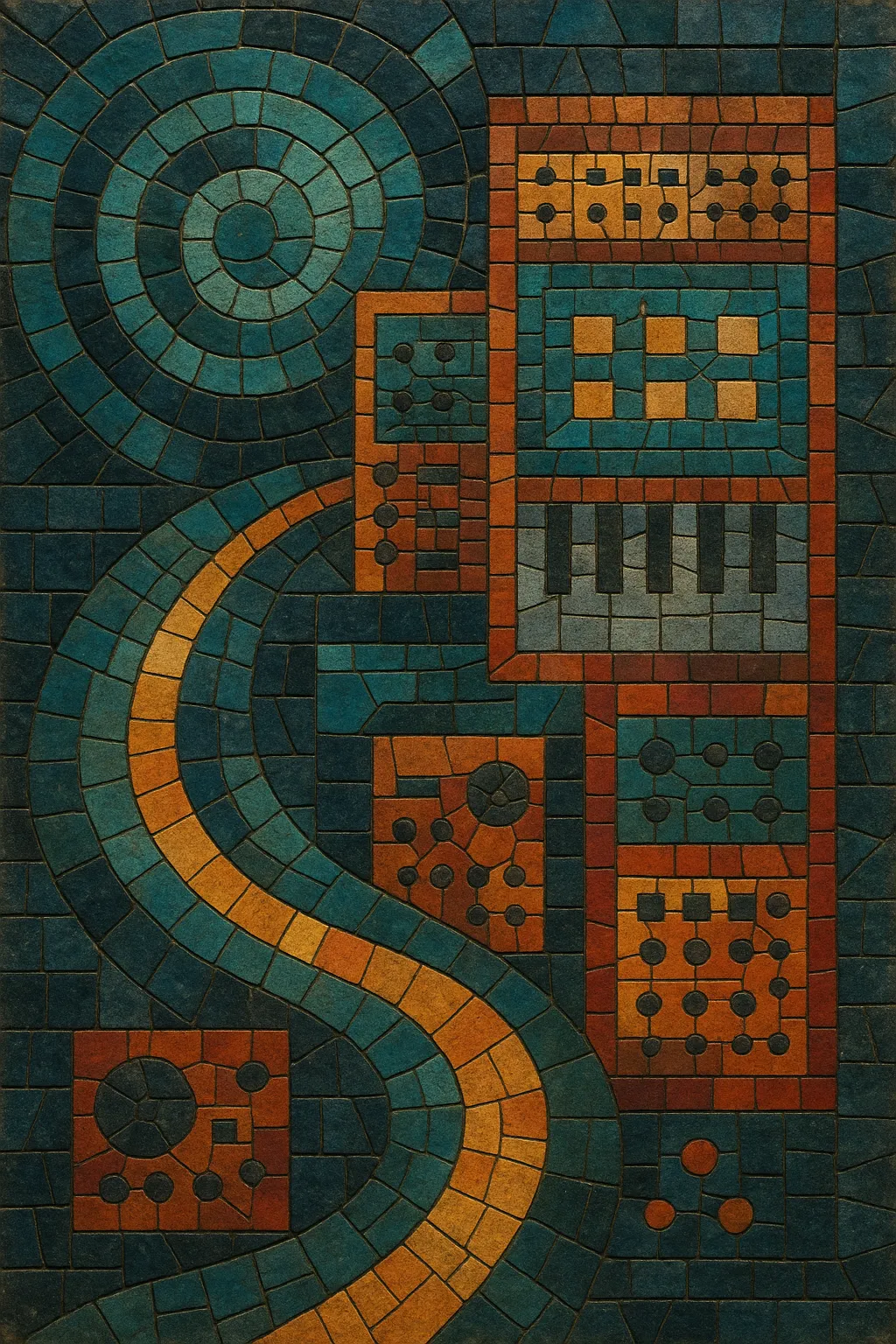Progressive electronic is a 1970s-born branch of electronic music that applies the exploratory ethos of progressive rock to synthesizers, sequencers, and studio-as-instrument techniques. It favors long-form structures, evolving textures, and thematic development over verse–chorus song forms.
Hallmarks include analog synth timbres (Moog, ARP), step-sequenced ostinatos, spacious tape and plate reverbs, and gradual modulation of filters and envelopes. The music often embraces minimalistic repetition, cosmic and cinematic atmospheres, and a sense of narrative journey, connecting it to krautrock’s experimentalism and early ambient’s focus on tone and space.
Progressive electronic emerged in continental Europe—especially Germany—where adventurous rock (krautrock) and avant-garde electronic practices converged. Early adopters explored modular synthesizers, tape manipulation, and long-form improvisations, taking the progressive rock mindset (extended forms, thematic development) into an electronic realm.
Artists like Tangerine Dream, Klaus Schulze, Ashra/Manuel Göttsching, Cluster, and Heldon defined the sound with sequencer-driven pulses, immersive pads, and side-long compositions. Parallel innovators such as Vangelis, Jean‑Michel Jarre, and Isao Tomita expanded the palette with grand symphonic textures, melodic synth leads, and meticulous studio craft. The era’s hallmark became slowly evolving patterns, timbral exploration, and space‑oriented atmospheres.
Affordable polyphonic and digital instruments (Prophet‑5, Fairlight, DX7) broadened harmonic and textural possibilities. Progressive electronic aesthetics seeped into film, television, and documentary scoring, while adjacent styles—ambient, new age, and early synthpop—absorbed its sequencing and sound‑design language. Live shows began integrating synchronized visuals and more precise MIDI control.
The genre’s DNA is audible across trance, ambient house, synthwave, and space ambient. Minimal and Berlin‑influenced techno inherited its hypnotic sequencing and gradual modulation methods. Contemporary artists and reissue labels revived classic 1970s catalogs, while modern producers combine modular rigs and DAWs to pursue the same long‑arc narrative and timbral evolution that define progressive electronic.
Use a blend of analog and virtual-analog synthesizers (e.g., Moog/ARP–style monosynths, poly synths for pads), step sequencers, and modular or semi‑modular systems. Add classic colors like Mellotron or string machines, and spatial effects (tape/plate reverb, delays, phasing) to create depth.
Build hypnotic foundations with step‑sequenced ostinatos at moderate tempos (typically 70–130 BPM). Employ motorik or subtly shifting patterns; let small parameter changes (filter cutoff, resonance, envelope decay) evolve the groove over time rather than frequent drum fills.
Favor modal centers, pedal points, and slowly moving harmonic fields. Use drones and quartal/cluster voicings to sustain atmosphere. Melodies should be economical—short motifs that recur and morph through timbral and intervallic variation rather than constant new themes.
Compose in long arcs: introduce layers gradually, modulate one element at a time, and use tension–release via filter sweeps, dynamic swells, and register shifts. Think in suites or movements rather than songs; transitions should feel organic and inevitable.
Commit to performance-like takes where real-time knob turns and sequencer transpositions drive expression. Leverage automation for subtle, continuous change. Prioritize wide stereo imaging and spacious mixes; avoid over-compression to preserve the music’s breathing, expansive quality.
Titles and visuals often suggest cosmic, environmental, or visionary themes. Consider integrating field recordings or electroacoustic textures to deepen the sense of place and narrative journey.


